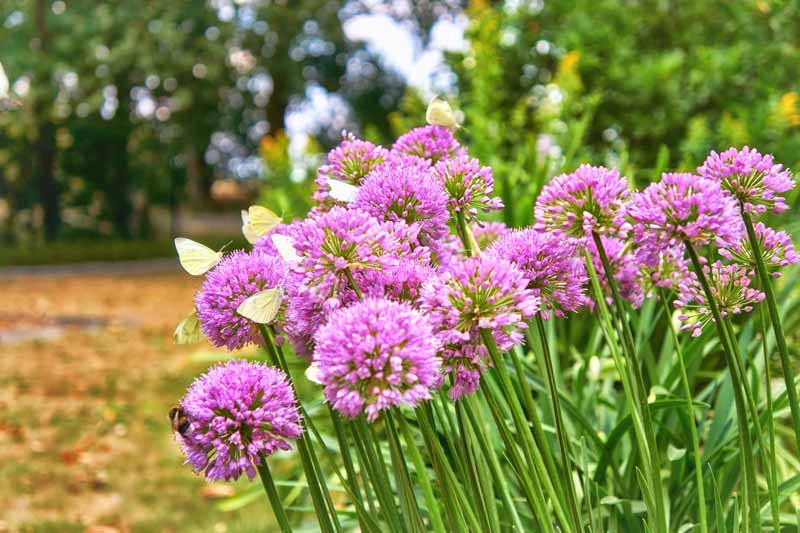Agapanthus Expanding Problems: Dirt, Sunshine, and Watering
Agapanthus Expanding Problems: Dirt, Sunshine, and Watering
Blog Article
Understanding the Art of Agapanthus Care: Necessary Actions for Healthy Development and Vibrant Blooms
In the world of horticulture, the growing of agapanthus stands as a rewarding venture for those who look for to support these classy blooming plants. From choosing the ideal range to understanding trimming methods, the journey in the direction of growing growing agapanthus plants is diverse and holds the essential to unlocking the full potential of these botanical treasures.

Choosing the Right Agapanthus Selection

When picking the appropriate Agapanthus selection for your yard, take into consideration aspects such as climate suitability, blossom color, and development practice. Agapanthus, typically referred to as Lily of the Nile or African lily, can be found in a variety of shades varying from shades of blue and purple to white. Choose a blossom color that matches your existing yard palette to produce a harmonious landscape. Additionally, consider the climate in your region to make sure the Agapanthus range you select can grow in your particular conditions. Some ranges are a lot more forgiving of cold temperature levels, while others like warmer environments. Recognizing the development routine of various Agapanthus selections is critical for appropriate placement within your yard. Some selections have a clumping growth practice, perfect for borders or containers, while others have an even more spreading nature, ideal for ground cover or mass growings. By very carefully reviewing these factors, you can select the perfect Agapanthus range to enhance the elegance of your yard.
Ideal Planting Conditions
Considering the ideal environmental needs is necessary for effective Agapanthus cultivation. Agapanthus grows in well-draining soil with a somewhat acidic to neutral pH degree. When growing, select an area that receives full sunshine to partial shade. In hotter environments, supplying some afternoon color can stop scorching of the fallen leaves. Agapanthus plants are sensitive to chilly temperatures and need to be shielded from frost throughout winter season months.
To guarantee healthy development and dynamic blossoms, plant Agapanthus bulbs at a depth of about 2-4 inches and area them 8-12 inches apart. Mulching around the base of the plants helps preserve moisture and reduces weed development.
Watering and Fertilizing Tips
Maintaining proper wetness levels and supplying essential nutrients are essential components in the treatment program for Agapanthus plants. When it comes to sprinkling Agapanthus, it is essential to strike a balance. If overwatered, these plants prefer continually damp dirt however are prone to root rot. Throughout the growing period, water deeply as soon as a week, making sure the soil is well-draining to avoid waterlogging. In hotter environments or during periods of dry spell, more constant watering might be essential to maintain the soil evenly damp. Nevertheless, decrease watering in the wintertime to avoid water logged conditions.
Fertilizing Agapanthus is crucial for promoting healthy and balanced growth and respected flowers. Apply a well balanced fertilizer, such as Bonuses a 10-10-10 formula, in the early spring as brand-new growth arises. Repeat this application every 6-8 weeks throughout the expanding season. Stay clear of extreme fertilization, as it can result in rich foliage at the expenditure of blooms. Constantly comply with the manufacturer's guidelines for proper dilution and application methods. By complying with these watering and fertilizing ideas, you can guarantee your Agapanthus plants thrive and produce vibrant, resilient flowers.
Trimming Techniques for Agapanthus
Pruning Agapanthus plants at the appropriate times and with correct techniques is critical for maintaining their health and advertising optimum development and blooming. The perfect time to prune Agapanthus is in late winter season or very early spring before brand-new growth arises.
Deadheading spent flowers can also reroute the plant's energy into generating even more blooms instead than setting seeds. If you desire to accumulate seeds for breeding, leave some flowers to fully grown and dry on the plant.
Bear in mind to use tidy, sharp tools to make exact cuts and reduce the risk of introducing diseases. Agapanthus. Routine trimming will help maintain your Agapanthus looking neat and healthy and balanced while ensuring an abundant display of lovely blooms
Handling Common Parasites and Conditions
After guaranteeing appropriate trimming techniques for Agapanthus, it is essential to address common insects and conditions that can affect the health and vigor of these plants. One usual pest that influences Agapanthus is the Agapanthus gall midget.
Additionally, Agapanthus plants can endure from root rot if they are planted in inadequately draining pipes dirt. By being cautious and taking punctual action against parasites and illness, you can help your Agapanthus plants grow and generate basics vibrant blossoms. Agapanthus.

Verdict
To conclude, grasping the art of agapanthus care entails choosing the ideal variety, offering optimal planting problems, correct watering and fertilizing, suitable pruning methods, and addressing usual bugs and conditions. By adhering to these important steps, you can make sure healthy development and lively blossoms for your agapanthus plants. Remember to on a regular basis keep track of and keep your plants to advertise their total health and durability.
To make sure healthy development and vivid flowers, plant Agapanthus bulbs at a depth of concerning 2-4 inches and space them 8-12 inches apart. By complying with Learn More Here these watering and fertilizing pointers, you can ensure your Agapanthus plants prosper and create vivid, lasting flowers.
One usual pest that impacts Agapanthus is the Agapanthus gall midge. Additionally, Agapanthus plants can experience from root rot if they are grown in improperly draining dirt. By following these crucial actions, you can guarantee healthy development and vibrant flowers for your agapanthus plants.
Report this page